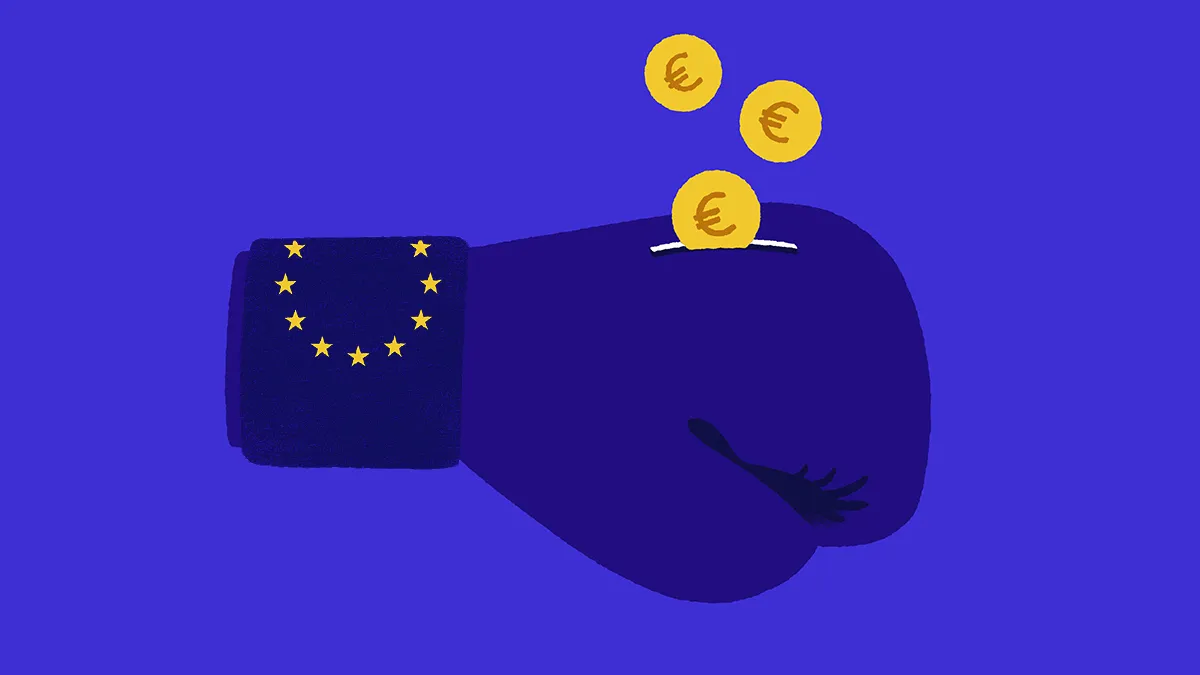This article was updated on 17 July to include budget documents that were uploaded at a later stage.
The EU on 16 July unveiled proposals for a beefed-up budget, totalling €1.98 trillion over the seven years from 2028.
With hundreds of billions potentially available, it’s a big deal for the energy sector, as the bloc faces up to multiple climate and competitiveness challenges.
The package proposed by the European Commission represents 1.26% of the bloc’s gross national income — a slight increase compared to the current multiannual financial framework (MFF), which runs until 2027.
“With this new EU long-term budget, we take a big leap towards delivering on the main objectives of our energy policy,” Energy Commissioner Dan Jørgensen said in a statement. He called it a budget designed to help the EU with “lowering energy prices, decarbonising and becoming more energy independent”.
How much of this will survive the co-legislators’ red pen remains to be seen. Member states, ever wary of loosening the purse strings, could well pare back Brussels’ ambitions in the negotiations ahead.
Contexte sets out some of the key points to watch.
Comparisons with previous budgets are adjusted for inflation and expressed in 2018 euros, except where indicated; notably,amounts for the proposed 2028-2034 MFF are expressed in current euros, based on a projected 2% annual inflation rate.
1. Over €150 billion for energy and climate programmes
Funding for energy and climate projects over the 2028–2034 period is spread across numerous EU budget envelopes — which total about €158.2 billion by our reckoning.
The new Competitiveness Fund merges several existing programmes, including LIFE for environment and climate, Horizon Europe, and the Innovation Fund, financed by revenues from the EU’s ETS carbon market. The Competitiveness Fund is set at €409.3 billion, of which €67.4 billion is earmarked for the clean transition and industrial decarbonisation. The industrial decarbonisation bank announced in February’s clean industrial deal falls under the governance of this fund. Energy efficiency, storage, heating and cooling, electrification, and net-zero technologies are among the sectors listed that should receive support from the Fund.
The Connecting Europe Facility (CEF), which finances cross-border energy and transport infrastructure, stays as a separate envelope, with €29.9 billion allocated specifically for energy. That’s a big step up from the current budget, where CEF energy is allocated €5.18 billion in 2018 euros.
The Social Climate Fund is integrated into a broader envelope for “Economic, Social and Territorial Cohesion, Agriculture, Rural and Maritime Prosperity and Security”, but retains its own line, credited with €50.1 billion. The envelope, initially planned for 2026–2032, is therefore maintained. The €7.5 billion Just Transition Fund for 2021–2027 also appears to have been merged into this broader funding instrument.
Programmes for nuclear safety and decommissioning receive €966 million, while Euratom — which supports nuclear research and innovation — is allocated €9.8 billion, including €5.8 billion for the ITER international nuclear fusion research programme. The Euratom envelope, including ITER, for the 2021–2027 period amounted to €6.757 billion (at 2018 prices).
All amounts for the proposed 2028-2034 MFF are expressed in current euros, based on a projected 2% annual inflation rate.
2. €29.9 billion allocated to cross-border projects — a fivefold increase for the CEF for energy
The new energy envelope under the Connecting Europe Facility is set to soar, with €29.9 billion earmarked for cross-border projects.
“We will have more and better electricity grids, interconnections, energy storage and hydrogen infrastructure,” Jørgensen said. Projects traditionally funded under the CEF include smart electricity and gas grids, hydrogen networks and electrolysers, CO₂ transport and storage infrastructure, as well as certain gas interconnection projects that benefit from exemptions.
All projects must involve at least two EU countries — and sometimes non-EU countries as well.
At 2018 prices, CEF had a €5.18 billion envelope for energy over the 2021–2027 period, alongside a much larger allocation for transport. Digital infrastructure, which previously had its own CEF budget line, has now been moved into the Competitiveness Fund.
Part of the €67.4 billion earmarked for the clean transition and industrial decarbonisation under the Competitiveness Fund will also support the rollout of domestic grids.
3. Nuclear funding on the horizon
The next EU budget will allow financing of nuclear technologies — a topic long considered taboo, largely due to opposition from Germany and Austria.
It’s a taboo broken by the Commission proposal for a new Competitiveness Fund, which earmarks €67.4 billion for the clean transition.
As previously reported by Contexte, the new programme bases part of its financing on net-zero technologies as defined under a 2024 regulation known as NZIA. This would mean that nuclear fission and its supply chain are eligible.
Some small and advanced modular reactors are expected to be granted the status of Important Projects of Common European Interest (IPCEI), making them eligible for top-up funding.
The regulation governing Euratom funds and nuclear safety will be presented on 3 September, according to a provisional Commission agenda.
4. A green stamp on 35% of spending
Under her plans, “35% of the new MFF spending would be earmarked for climate and biodiversity objectives”, Commission President Ursula von der Leyen told the press on 16 July.
That would mean around €700 billion labelled as “green” within the seven-year, €2-trillion envelope.
With the current MFF, targets are set at 30% for climate and 10% for biodiversity — although it was never entirely clear whether the two were cumulative.
Some funds will have to be greener still. An annex to the regulation establishing a “performance framework” sets out the green earmarking target that each fund will be required to meet. 43% of the Competitiveness Fund will have to be earmarked for green objectives. A 43% green target also appears to apply to a new envelope for “Economic, Social and Territorial Cohesion, Agriculture, Rural and Maritime Prosperity and Security”, with disbursements linked to National and Regional Partnership Plans. The Connecting Europe Facility, which funds cross-border energy and transport projects, is subject to a 70% green spending target.
The Commission also promised “an upgraded monitoring system” to better track how much of the EU budget is spent on green priorities, with a new dedicated methodology.
That comes after the European Court of Auditors delivered a scathing verdict on the existing system. In their 2024 report on the post-Covid Resilience and Recovery funds — which were also meant to hit green earmarking targets — auditors highlighted a “high level of approximation” in tracking climate-related spending, and warned that this could lead to significant overestimation.
5. Carbon revenues could contribute around €11 billion per year
The Commission is seeking to fund its plans in part by raising €58.2 billion a year from new resources — such as tobacco taxes and a business levy (see the own resources decision).
Of that, it hopes to raise around €9.6 billion per year over the seven-year period by using 30% of the revenues from its traditional carbon market, ETS1, which covers sectors such as electricity, industry and aviation. “Most revenues from the auctioning of emission allowances would continue to flow to national budgets,” said the Commission’s MFF document.
The CBAM, a border levy on certain imports of energy-intensive goods such as cement and fertiliser, is expected to channel up to 75% of its revenues into the EU budget, generating an estimated €1.4 billion annually.
As previously reported by Contexte, the Commission is no longer seeking to use funds from ETS2, the extension of the emissions trading system to buildings and road transport. ETS2 has been heavily criticised by many member states, and the vast majority have yet to transpose it into national law.
The Commission set out its estimated revenues from CBAM and ETS1 and ETS2 in 2023 (see here, here, here and here).




